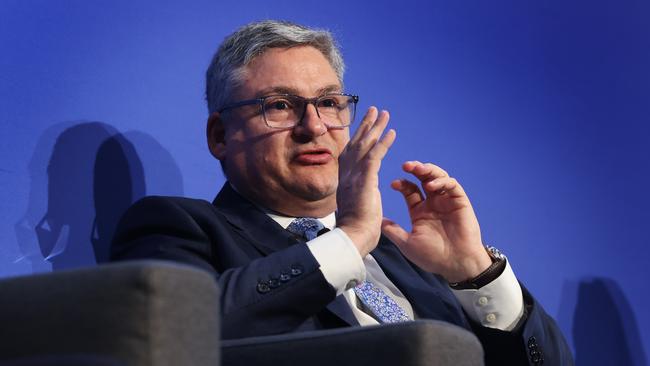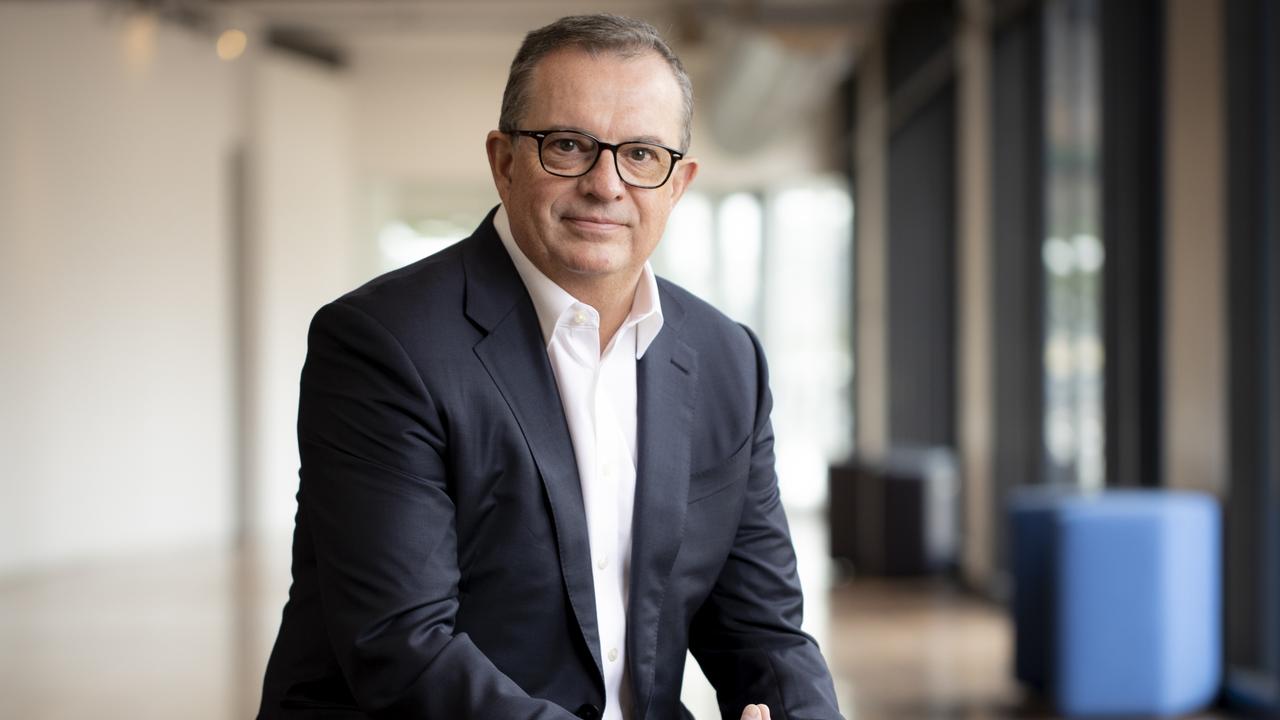Future Fund’s advantages over the partisan Trump model
Australia’s Future Fund is significantly different to the politically charged model Donald Trump wants for the US, but maintaining its strength in our national interest will be closely watched.

Business
Don't miss out on the headlines from Business. Followed categories will be added to My News.
President Trump’s plans for a new US sovereign wealth fund looks like being a very different model to Australia’s $240bn Future Fund.
While Trump wants to use a new US fund to give his government the capacity to buy assets such as TikTok, Australia’s Future Fund has managed to navigate its own path of building up its wealth without being seen as a policy arm of government.
Announcing his executive order this week directing the Treasury and Commerce departments to work on a proposal to set up a fund, Trump signalled he wanted it to be a significant one that would rival some of the big global funds.
Just how he plans to get the money for his fund is not clear, with some suggestions that the revenue from new tariffs could be used to seed it.
There have largely been two types of sovereign wealth funds set up by governments around the world – one to invest the funds generated from the proceeds of oil or energy wealth such as Norway’s Government Pension Fund, and others which are pure national development funds.
In Australia’s case, the Future Fund was set up in 2006 to invest the proceeds of the government’s windfall billions from the sale of Telstra, with the specific goal of generating a pool of capital to pay for the superannuation liabilities of federal public servants.
The arm’s-length approach, which means that it can only invest through fund managers and cannot take direct stakes, has allowed the fund to make its own investment decisions, which have added $177bn in value to its original seed capital.
The emergence of a capable team of investment professionals has seen the Future Fund given the mandate to manage the money of six other funds which now have a combined value of $67bn. The fund’s latest results, for the 2024 calendar year, have come in at an impressive 12.2 per cent return, in large part thanks to the booming US share market.
The fund now has almost $60bn invested in offshore shares, mainly in the US, with another $25bn in Australian shares.
While some investors were predicting a year ago that the US market rally had done its dash and was overvalued, the fund stepped up its exposure to offshore shares from 17.8 per cent at the end of 2023 to 24.7 per cent at the end of 2024, reducing its cash on hand from $18.9bn to $13.9bn.
Other sectors also did well for the fund including property, which is showing signs of bottoming in some areas, as well as private equity.
The latest figures show the fund has delivered an average annual return of 8.1 per cent a year, well above its mandated target of 6.8 per cent, over the past 10 years.
The fund is part of the Commonwealth government’s national balance sheet.
While the government has so far not withdrawn money from the fund, it does benefit from being able to include the dividends and interest received by the fund in the calculation of its underlying cash balances.
So where to from here?
A key factor in the success of the fund in building up its assets so far has been that it has been allowed to invest as it sees best.
In a deal struck with the federal government in November, it has also been able to push back the date when the government can draw down money from the fund from 2026-27 to at least 2032-33. This gives it a lot more certainty about its liquidity picture to make some big-ticket long-term investments.
The fund’s leaders have managed to tread a fine line in preserving assets while agreeing to “have regard to national priorities in performing its investment functions”, with priority areas listed as supporting the energy transition, increasing the supply of residential housing, and delivering improved infrastructure.
The agreement was carefully worded, spelling out that the fund’s board “must continue to make investments consistent with their legal obligation to maximise returns over the long term, while taking acceptable but not excessive levels of risk”.
Ironically, while the fund’s strong performance last year has come from its offshore assets, the new mandate adds pressure to look at more investments back home. That said, as CEO Ralph Arndt said after the results, the fund is seeing plenty of potential investments in Australia in line with the priorities which it believes can deliver good returns.
The fund has $11bn in infrastructure assets in Australia including stakes in Melbourne Airport, Perth Airport, Port of Melbourne, Canberra Data Centres, communications tower company Amplitel, timber company OneFortyOne Plantations, and Tilt Renewables.
This is just under half its total investments of $23.7bn in infrastructure and timberland.
Plans for more local investment will see it put more money into Perth and Melbourne airports, helping to finance new runways which are being built to cater for increased demand, and an expanded investment in data centres, most likely through its stake in Canberra Data Centres.
Even before the agreement was announced, the fund was signalling it would be putting more money into local assets.
In June 2024 it announced it was buying a stake in ConnectEast’s EastLink toll road in Melbourne linking up with the Brisbane-based QIC – the fund’s first direct investment in an Australian toll road.
In October it announced plans to invest $350m into a $1.6bn deal managed by US company Greystar to buy seven student housing blocks in Sydney, Melbourne, Brisbane and Canberra from Singapore’s sovereign wealth fund.
All indications are that the fund’s future investment in “national priority areas” in Australia will be along similar lines – nowhere near the politically driven mega deals envisaged by Trump in the US.
That said, how it navigates the future in terms of investing more in Australia while delivering continued strong returns will be watched closely.
The fund has built up significant credibility with the public and with investment markets since it was established in 2006 which it will not want to squander.
Australia is a very different place than Trumpland 2025.
Originally published as Future Fund’s advantages over the partisan Trump model



